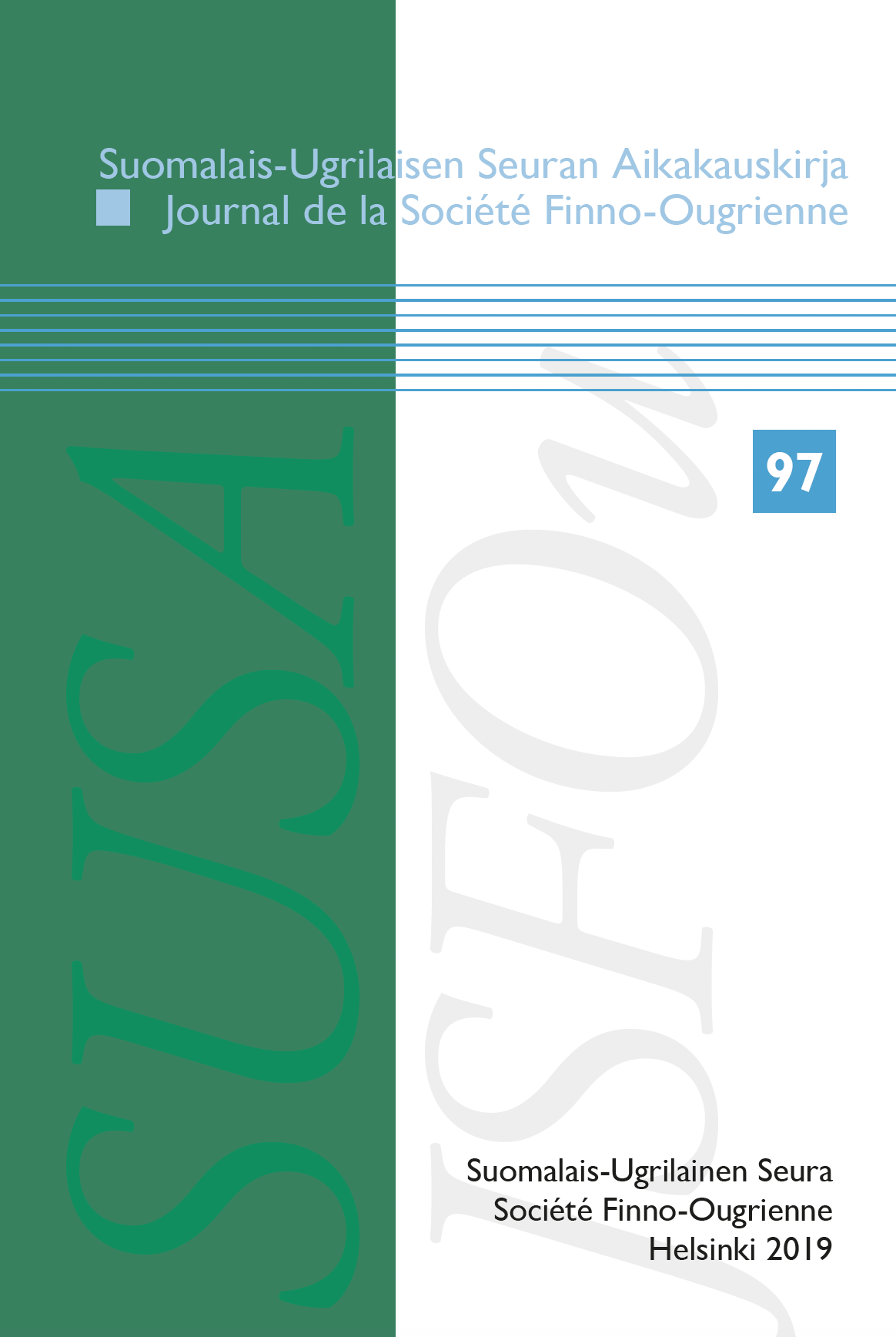Lähtökielen sanansisäisten soinnittomien klusiilien edustus kantasuomen balttilaislainoissa: Osa II. Edustus kohdekielen pitkän tavuaineksen jäljessä
DOI:
https://doi.org/10.33340/susa.76433Abstrakti
In this article I intend to prove that the word-internal Baltic tenuis consonants k, t and p after a long syllable appear as the single stops k, t and p in old Baltic loanwords in Proto-Finnic in all regular instances, to confirm that all Finnic geminate stops after a long syllable have arisen after the end of the contacts between Baltic and Proto-Finnic.
I will critically assess the Baltic loan etymologies which contain geminate stops kk, tt and pp after a long syllable, at which point most of such etymologies will be rejected, and either the long syllable or the geminate stop in the Baltic loanwords kaikki, laukko and peikko in Finnish, malk and kurt in Estonian, will be shown to be secondary. Vowel contraction, like in kaikki, will be claimed as a frequent source of Finnic -ai-. In the possible Baltic loanwords haukkua, paukkua, ronkkua, harakka and peippo, the geminate stop will be explained as onomatopoeic. The two historically geminated Baltic borrowings, South Estonian kaugas and ärk ́, originate from more recent local contacts with Old Latgalian.
I will give more credible etymological explanations for 29 Finnic words, once claimed to be of Baltic origin. 18 of these explanations are already known, but I will specify the etymologies given to Finnish aitta, seitti, vaikku and Estonian kärpima, and support the origins of Finnish kartta, riitta and South Estonian kirges with new arguments. I will suggest new etymologies for 11 words: Finnish haitta, karppa, kurpponen, liettää, porkkana, Karelian nautti, Estonian karp, paat, Livonian keŗk, South Estonian käo|kirǵ and virṕ.
I will also present several cases, where words of different origin with similarities in both form and meaning have an influence on each other’s phonological and/or semantic development.





